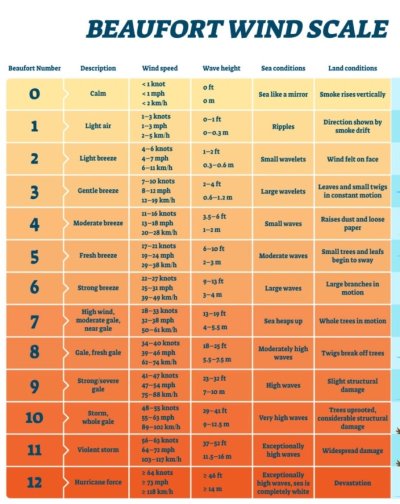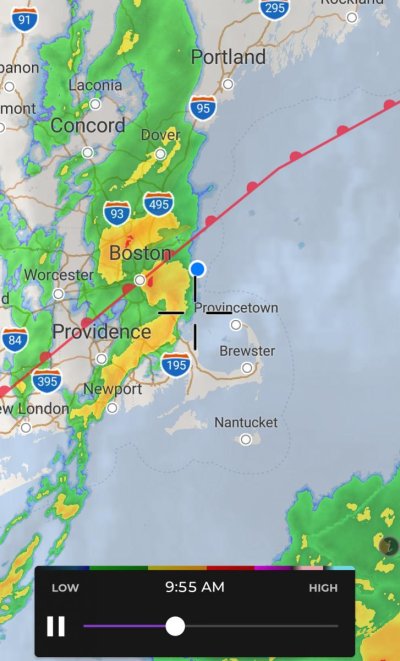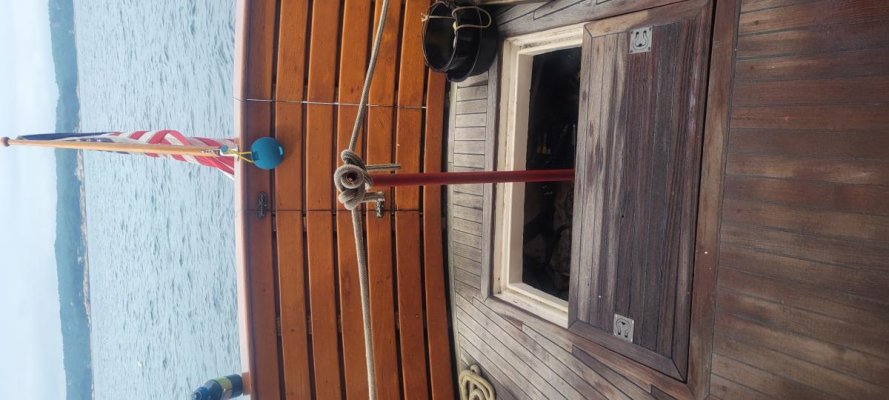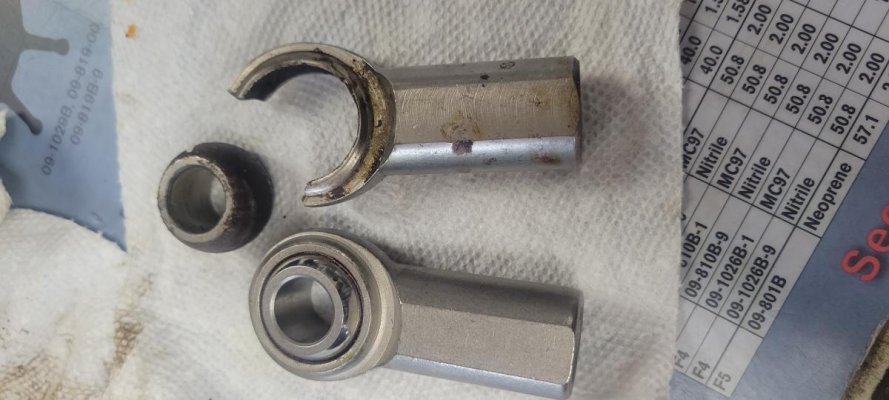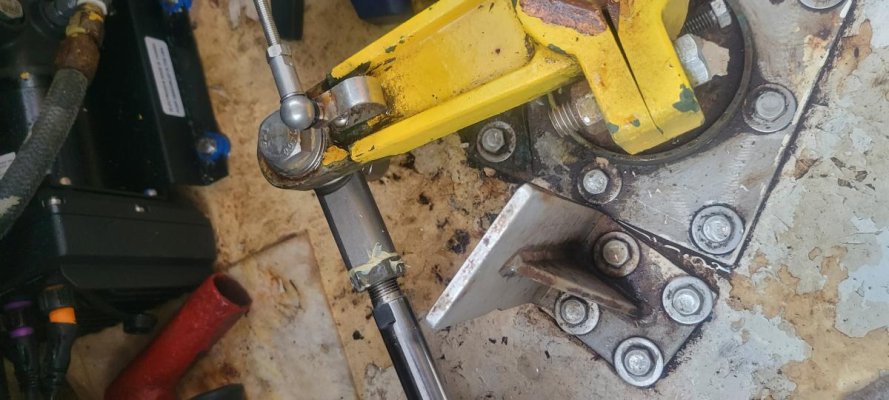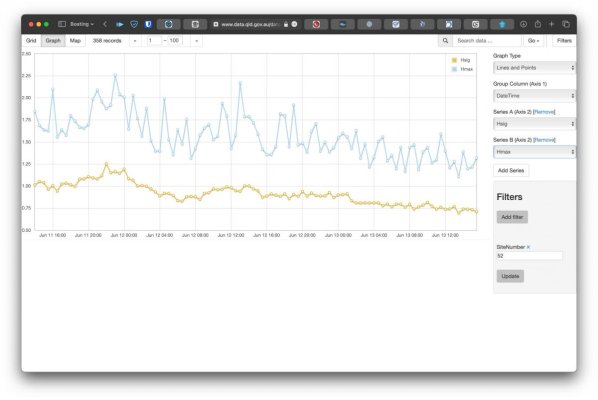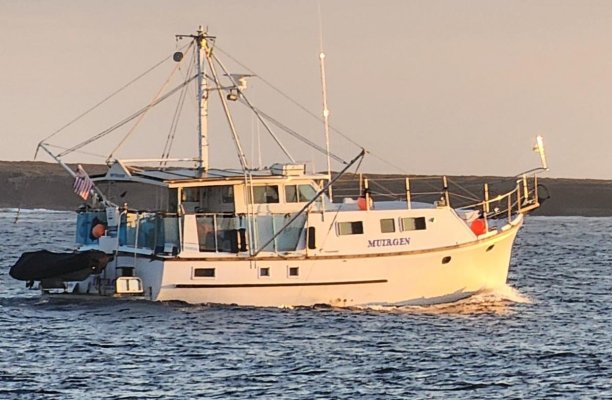As most of you know we sail around in the Med, mostly Greece and Turkey this year. We spent a lot of time on the dry this summer, but getting to Turkey and coming out of Turkey we had to cross the Aegean sea and that one is infamous for the Meltemi winds. Meltemi winds can be very sudden and are very strong, can last up to a month and apparently the Greek meteo cannot forecast them. So in other words you are sailing blind, basically there is no need to check the weather, your guess is as good as mine.
In May we left the island of Schinousa, on our way to Kalymnos (close to Turkey) and according to the meteo we should have 2 Bft maximum. First 2 hours went fine, no problem, until we got to the island of Amorgos. We could see the windfield on the water, so expected 15 to 20 kts, but in less than 2 min the wind picked up to 40 - 45 kts. Still about 1 hour out of Amorgos we had no other option but to keep going, aiming for the South side of the island, hoping to find calmer winds there. Seas were picking up to 8 - 10', mostly beam on.
On the West side of Amorgos we made the turn to the South, aiming for the Southern coast which would give us protection from the Northerly winds. Unfortunately that did not happen, in fact the winds got stronger and we ended up with 61 kts gusting 67 kts, the whole boat was heeling over like a sailing vessel, due to the wind. Luckily we were close to the island so the seas could not gather any force to become worse. Turned around and searched for shelter, but in order to do that we had to get to the North side (open to the wind) of the island. Seas were quite horrendous, but were able to find a shelter in a bay on the West side of the island. Had to stay there for a couple of days with continuous 7 - 8 Bft. Around 90 mtr anchor chain in 4 mtr depth and 4 land lines to keep the stern to the shore. At that time still without stabilizers, so not a fun time.
Next encounter was in a quiet bay in Turkey near the village of Torba. Sunny afternoon, hardly any wind and around 5 PM all of a sudden the wind picked up to 56 kts, ripped off 2 solar panels, teared a sun shade apart and sent furniture flying. Wind was gone as fast as it came, turned out to be normal in that area, but we had never heard of it.
Next not so pleasant encounter was from the island of Nsiros to Symi (7 hour crossing) mid October this year. Weather forecast called for 15 kts wind until noon and then 2 - 5 kts for the rest of the day. Leaving Nsiros in the morning gave us the 15 kts Northerly wind, but already with heavy seas (6 - 8 feet, beam on). Stabilizers had to work hard.
Between Nsiros and Symi the wind did die down a bit, seas were comfortable, but then came the stretch along the Northern side of Symi to the North East corner in order to get to the safety of the main port in Symi.
Winds started to pick up to 20 kts, then 25 kts, then 30 kts, up to 35 kts and in the end we had over 40 kts steady beam on. The wind was not the problem, but I knew the seas were going to be the problem later on. We still had about 3 hours to go and in 3 hours that sea can build up to a very heavy sea. Near the North East point of the island we encounterd 10 - 12' waves coming from slighly behind on the port side. Stabilizers were working overtime, every wave that hit us sent vibrations through the whole boat. It took forever to cross the North East point of the island, but as soon as we turned the corner the seas were sort of calm. The wind was still there, but compared to what we had before it was nothing. Made it into the port without further problems, happy we had a strong boat to get us through that weather.
Subsequent encounter was recently (beginning of November) on our way from the island of Symi to Kos (eastern Aegean sea). After about a week of storms there would be a window of about 3 days before the next storm (which was forecasted to be even worse than what we had had) would arrive. That storm would bring winds from the South East and that meant that the port we were in was the wrong place to be. So we decided to go to the island of Kos, about a 7 hour trip with no shelter along the way (Turkish coast with no protection from the South), so had to wait for a good forecast. 15 kts predicted after several days of 11 - 12 Bft. Waited for one extra day to let the seas calm down, set out early morning. Immediately after we turned into the open sea we realized the forecast was off again. the 15 kts forecasted turned out to be 25 - 30 kts, but luckily the seas had not built up yet, so we decided to press on. Wind was supposed to turn to the South, which meant coming from behind, not problematic.
As soon as we made the turn around the Western point of the Turkish coast, heading North to the island of Kos the wind started to increase to 8 Bft and waves became higher as well, but luckily a following sea. However the last stretch in open water from the Turkish coast to the island of Kos the wind increased to 10 Bft, 51 kts gusting 56 kts and was now beam on (West North West). Then, on the South East point of Kos, which is already infamous for heavy winds, the wind increased to 12 Bft, waves got to 10 - 12' high, not bad if they are long, but these were short. SOG reduced to just 2.5 kts, which meant the last couple of miles took forever. There was one other boat out at sea that day, all other boats had already made it in time to port. And thus you realize that being able to go fast can sometimes be very good. We can't go fast, so we have to ride it out.
Docking was also interesting with 36 kts in the port, dropped over 100 mtr of chain that day in 5 mtr water.
We knew the Aegean can be quite difficult when it comes to wind and normally you would check the weather before you set out. Unfortunately in 3000 years the Greeks have not been able to come up with a reliable forecast, so situations like this happen on a daily basis. There are load of videos on Youtube of people getting surprised in the Aegean.
The storm that was forecasted for the day after our arrival in Kos did not arrive until 2 days later. However then the Greek meteo did not send out any warnings until the storm had arrived in full force. The storm was actually named Oliver, you can find videos online of Oliver destroying the Turkish coast. A lot of commercial vessels came to seek shelter on the lee side of the islands in the Aegean, but some ships simply could not get out of the way. Unfortunately a 110 mtr cargo vessel was caught by surprise and sank with the loss of 18 lives. Waves were reported at 30' in that area, the ship stood no chance. Another ship broke in half near the coast of Turkey and again another one sank in the Black Sea. It turned out to be a devastating storm. Glad we were not in it.
Due to the absense of a reliable forecast our decision is now to cross the whole Aegean next year in 1 day next season. We will wait for a dead calm period and then we will just go for it. We will have some shelters along the way, but the longest between islands will be 10 hours of sailing. If we then get confronted by 12 Bft again we could be in serious trouble. It is like gambling with your life, but crossing the Aegean in small legs of 4 - 5 hrs will result in a crossing that can last 1 or 2 months. Now we will make it a 36 hour crossing. Luckily we do have stabilizers now and that makes a difference.
And that will be the last time we will ever be in the Aegean sea. We now understand why it took Odysseus 20 years to make it home and since the Greek meteo is absolutely worthless we now worship Poseidon. At least he has 3000 years of experience in keeping sea farers safe.
Anyone thinking to come to Greece to sail the Aegean ? Bad idea, stick to the Ionian or stay in Turkey, but don't go into the Aegean.
We filmed all these encounters with our Gopro, will turn it into a video once we figure out how to edit videos and post them on Youtube. Hopefully it makes people think twice of going into the Aegean.
